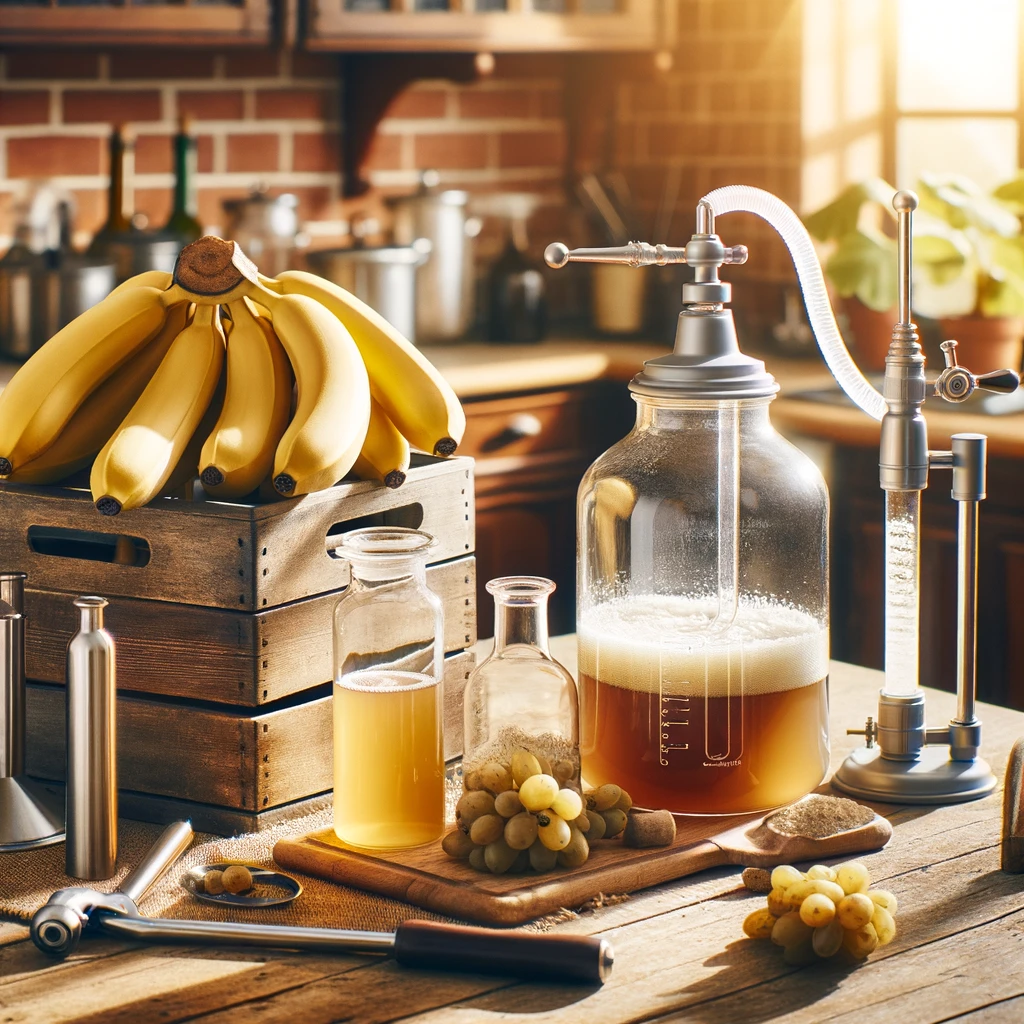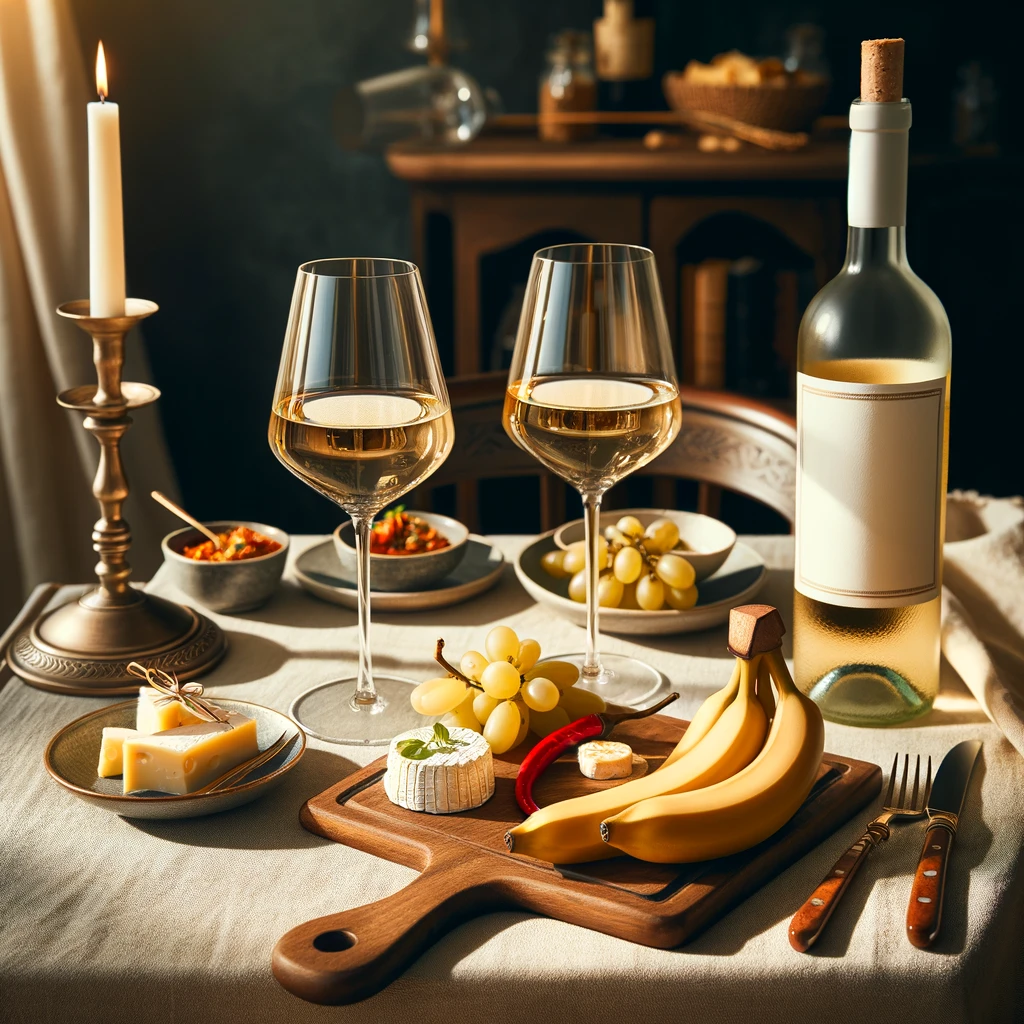Banana wine is a delightful surprise, emerging from the shadows of traditional viticulture to claim its rightful place at the table of fruit wines. This tropical elixir, with its rich history rooted in the warm soils of East Africa, has danced across oceans to grace international markets with its unique profile. In this article, "Banana Wine: The Tropical Beverage Revolutionizing the Wine World," we embark on a flavorful quest to explore the nuances of wine from bananas, an innovative twist on an age-old indulgence.
As curiosity in home brewing and artisanal winemaking surges, enthusiasts are eager to unravel the mysteries behind creating wine with bananas. Whether you're looking to craft a personal batch from the comfort of your home or simply savor the knowledge of this fruity concoction, we've got you covered. From the sweet, aromatic allure of the beverage to the intricate steps of its creation, we'll dive into a comprehensive banana wine recipe that caters to both small and large-scale ambitions. So, whether you're curious about a banana wine recipe for 1 gallon or scaling up to 5 gallons, your journey to a homemade paradise starts here.
Before we delve into the heart of winemaking, let's raise a glass to the versatility and charm of banana wine, a testament to the innovative spirit of connoisseurs and casual drinkers alike. Stay tuned as we unfold the story of banana wine, a narrative steeped in tradition yet boldly modern in its appeal.

Step-by-Step Banana Wine Recipe
Banana wine conjures a sense of the tropics with every sip, and making it at home can be a delightful venture into winemaking. Here's a versatile banana wine recipe that can be adapted for 1-gallon batches or scaled up to 5 gallons for those ready to stock their cellars.
Ingredients for 1 Gallon:
- 3 lbs of ripe bananas
- 2 lbs of sugar
- 1 gallon of water
- 1 lemon (juiced)
- 1/2 tsp of acid blend
- 1 tsp of yeast nutrient
- 1/4 tsp of tannin
- 1 packet of wine yeast
- Campden tablet (optional, used 24 hours before adding yeast)
Instructions:
- Preparation: Begin by sanitizing all your winemaking equipment. This is crucial for preventing unwanted bacteria from spoiling your wine.
- Mashing the Bananas: Peel the bananas and slice them into coins. Place the banana slices into a primary fermentation vessel and mash them gently. This releases the sugars and flavors essential for fermentation.
- Boiling: Boil the gallon of water and pour it over the mashed bananas. Let the mixture sit for 40 minutes to an hour to pasteurize and extract the flavors.
- Adding Sugar and Acids: Once the mixture has cooled to room temperature, add the sugar, lemon juice, acid blend, and tannin. Stir until the sugar is completely dissolved.
- Yeast Introduction: If using a Campden tablet, wait 24 hours before adding the yeast. Otherwise, sprinkle the yeast nutrient and wine yeast into the mixture and stir.
- Primary Fermentation: Cover the fermentation vessel with a clean cloth and set it aside in a warm area to kickstart the fermentation process. Stir daily for the first week.
- Secondary Fermentation: After a week, strain the liquid to remove the banana solids and siphon the wine into a secondary fermentation vessel like a carboy. Fit it with an airlock and let the wine ferment for 4-6 weeks.
- Racking: Once fermentation has ceased, siphon the wine off the sediments into a clean vessel. Repeat this process every few weeks until the wine clears.
- Bottling: When the wine is clear and no more sediments form, it's ready to be bottled. Use sanitized wine bottles and corks.
- Aging: Age the wine for at least six months before tasting. Banana wine matures with age and develops a smoother, more refined taste.
Scaling Up to Banana Wine Recipe 5 Gallons
To make 5 gallons of wine, simply multiply the ingredients by five, ensuring you have a fermentation vessel large enough to accommodate the larger volume.
Tips for Success:
- Use ripe bananas for a richer, more intense flavor.
- Ensure the specific gravity is correct by using a hydrometer. The ideal reading before fermentation is around 1.090.
- Patience is key! Banana wine gets better with time.

The Making of Banana Wine
Delving into the art of winemaking, banana wine stands out with its simplicity and the delightful twist it offers. While the basic principles of winemaking remain the same, the process of turning bananas into an alcoholic beverage is unique in its own right.
Selecting the Right Bananas:
The journey begins with the selection of bananas. Fully ripened, even overripe bananas, are ideal as they contain higher sugar levels, which are crucial for fermentation. The ripeness not only influences the sweetness but also the intensity of the banana flavor in the final product.
Mashing for Success:
After peeling, the bananas are mashed to a pulp. This crucial step releases the fruit's sugars and juices, making them available for the yeast to consume during fermentation. A thorough mash ensures a smooth fermentation process.
Banana Wine Fermentation – The Heart of Winemaking:
With the addition of water, sugar, yeast, and sometimes a nutrient blend, the mixture is left to ferment. The yeast plays a pivotal role, transforming the sugars into alcohol and carbon dioxide. This stage can last several weeks to months, depending on the desired outcome.
Monitoring and Patience:
Regular monitoring during fermentation is key. The brewer must ensure the environment is clean and the temperature is consistent. Patience is paramount, as rushing this process can lead to incomplete fermentation or off-flavors.
The Clearing Phase:
After primary fermentation, the wine is racked, meaning it is transferred from one container to another, leaving the sediment behind. This may be done multiple times until the wine is clear. Clarity is a sign of a well-made wine and indicates that it is almost ready for bottling.
Bottling and Aging:
The final step is bottling the wine and then aging it. Banana wine benefits from aging, which allows the flavors to meld and mellow, resulting in a smoother, more palatable drink.
Each step in the winemaking process is an art form, a testament to the skill and patience of the winemaker. Banana wine, with its unique characteristics, is not just a beverage but a craft that bridges tradition and innovation.

Taste Profile and Serving Suggestions for Banana Wine
Banana wine is a unique beverage with a flavor profile that sets it apart from traditional grape wines. It typically features a sweet, fruity essence with hints of banana flavor, of course, complemented by a subtle acidity that balances the taste. Its aroma is often described as mildly tropical, with a pleasant yeastiness that's common in homemade fruit wines.
Visual Appeal:
In terms of appearance, banana wine usually possesses a light golden hue, sometimes with a slight cloudiness if unfiltered. Its clarity can vary, but when properly racked and aged, it can achieve a beautiful, crystal-clear quality.
Serving Tips:
When serving banana wine, it's best to chill it slightly, to around 50-55 degrees Fahrenheit. This temperature allows the wine's flavors to shine without being dulled by excessive cold. Use a white wine glass to enhance the aromatic experience.
Food Pairing:
Banana wine pairs wonderfully with a variety of foods. Its sweetness makes it a natural partner for spicy dishes, as it can help balance the heat. It also complements desserts well, especially those featuring caramel or vanilla flavors. For a cheese pairing, consider creamy cheeses like brie or camembert, which will harmonize with the wine's fruit-forward profile.
Occasions:
This wine is perfect for casual gatherings, summer picnics, or any occasion where a light and refreshing beverage is desired. Its unique character also makes it a conversation starter at tasting events.
Banana wine is an excellent way to introduce diversity into a wine collection and offers a novel experience for those accustomed to traditional wines. Its exotic taste profile and versatility in pairings make it a delightful addition to any wine enthusiast's repertoire.

Conclusion
Banana wine, with its exotic flair and delightful taste, stands as a testament to the creativity and versatility of winemaking. This tropical beverage not only enriches the palette of wine enthusiasts but also invites novices to explore the world of winemaking from a new perspective. Whether you're crafting a batch from scratch or enjoying the fruits of your labor, banana wine embodies the joy of discovery and the pleasure of sharing.
As we've explored the process from selecting the perfect bananas to the final sip, it's clear that banana wine is more than just a novelty; it's a celebration of innovation within the age-old tradition of winemaking. So, the next time you're looking to impress guests or simply indulge in a unique tasting experience, consider banana wine — a delightful journey from the tropics to your glass.
FAQs about Banana Wine
Q1: How long does it take to make banana wine? A1: The entire process from preparation to bottling typically takes between 3 to 6 months, depending on fermentation and aging preferences.
Q2: Can banana wine be made without sugar? A2: While sugar is a key ingredient in the fermentation process, substitutes like honey can be used. However, completely omitting a fermentable sugar source will result in a very low-alcohol or non-alcoholic beverage.
Q3: How long does banana wine last once bottled? A3: If stored properly in a cool, dark place, banana wine can last for several years. It tends to improve with age, much like grape wines.
Q4: Is banana wine sweet or dry? A4: The sweetness or dryness depends on the fermentation process and the amount of sugar used. It can be made to suit either preference.
Q5: Can banana wine be made with green bananas? A5: It's possible, but ripe or overripe bananas are preferred for their higher sugar content and stronger flavor. Green bananas will result in a much subtler taste.


